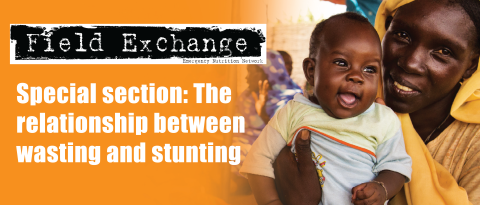Infant and young child feeding in emergencies infographic series
In 2021, the Infant Feeding in Emergencies (IFE) Core Group published the Infant and Young Child Feeding in Emergencies (IYCF-E) infographic series. The infographics are based on the Operational Guidance on IFE1 (OG-IFE) and aim to assist in implementing specific actions and recommendations within the guidance. To date, six infographics have been produced and translated into multiple languages.
The first infographic helps to assist in the implementation of action 5.7 of the OG-IFE – protect, promote and support the early initiation of exclusive breastfeeding in all newborn infants. The infographic provides a guide for maternity service providers on supporting the early initiation of breastfeeding in emergencies and is available in English and French. The infographic includes key conversations and actions to take during pregnancy, immediately after birth, within the first hour after birth, on day one and at discharge.
The second, third and fourth infographics help to assist the implementation of action six of the OG-IFE– minimise the risk of artificial feeding. The second infographic provides a guide on preventing and managing inappropriate donations of breast milk substitutes (BMS) and other prohibited products for emergency relief staff, donors and governments and is available in English, French, Spanish and Japanese. This infographic includes key information on the risks associated with inappropriate donations and the key actions to prevent, detect and manage these donations.
The third infographic provides a guide on planning and managing artificial feeding interventions during emergencies for decision-makers and programmers working in emergency preparedness and response. The infographic is available in English and provides guidance on assessing the need for artificial feeding, designing and planning an artificial feeding management programme, securing the required supplies and services and implementing artificial feeding support.
The fourth infographic provides guidance for frontline workers, including health, nutrition and child protection staff, on supporting infants dependent on artificial feeding during emergencies. The infographic is available in English and provides guidance on the following topics: checking infants' eligibility for BMS support, determining if BMS can be used hygienically at home, discreetly providing BMS and supplies, counselling demonstrating how to feed infants as safely as possible, continued support and follow up procedures.
The fifth and sixth infographics help to assist the implementation of action 5.4 of the OG-IFE – anticipate and assess the impact of human and animal infectious disease outbreaks on infant and young child feeding and take actions to mitigate the risks. The fifth infographic outlines the key considerations when making recommendations for infant feeding during infectious disease outbreaks and is aimed at national health authorities, health and nutrition policymakers, professional associations and other bodies and practitioners working in outbreak preparedness and response. The infographic is available in English, French, Spanish and Arabic. The sixth infographic is aimed at programmers working in emergency preparedness and response and provides information on how to anticipate the impacts of an outbreak on infant feeding and outlines the key actions to mitigate the risks. The infographic is available in English, French, Spanish and Arabic.
The IYCF-E infographics series is available online at: https://www.ennonline.net/ifecoregroupinfographicseries


